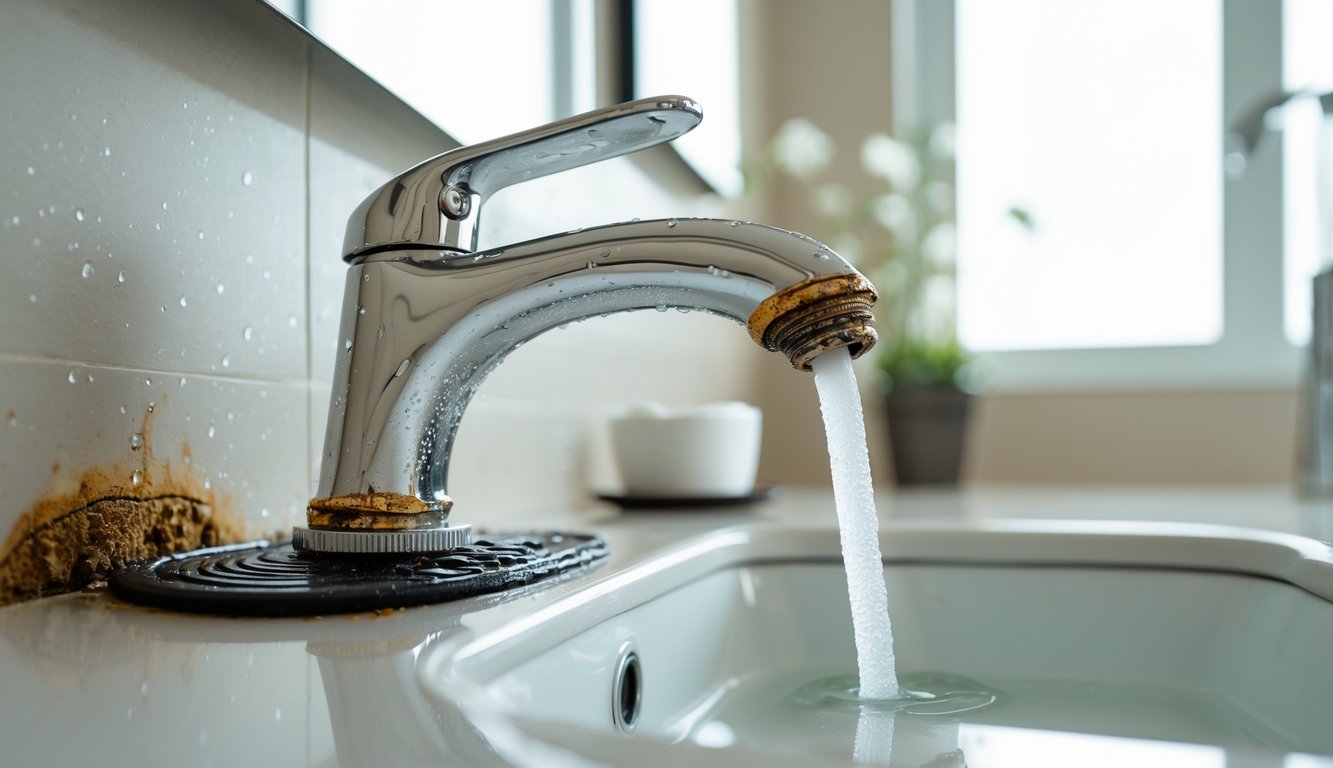
Fixture Materials and Design Flaws
Why do people keep buying fixtures made from the worst possible metals? Brass with a cheap coating doesn’t magically hold up after a year of steamy showers. Plumbers complain about it all the time, but nobody listens. Leaks happen because of bad materials and weird drains, not because you “got unlucky.” Shiny doesn’t mean strong—if you’ve ever had nickel flake off in your hand, you know.
Materials That Cause Leaks
Stainless steel, but with the wrong alloy? Or those matte black finishes that look great on Instagram but rot underneath? I get it, they’re trendy, but they’re also a leak waiting to happen. I’ve run water through imported powder-coated faucets and just waited for the first drip. At least once a month, I see one corroding behind a vanity.
A trade journal said maintenance costs jump 23% when you use cheap coatings. That sounds about right. If you want something that lasts, pick solid brass, real stainless (304 or better), and make sure there’s some kind of leak protection built in. Zinc-alloy “bargains”? Skip them. Five years in, the finish bubbles and you’re stuck replacing everything. I wish I was exaggerating.
Poorly Designed Drain Systems
How are we still installing tubs with drains that are basically designed to clog? Every fall, my phone blows up: “water backing up,” “weird smell,” “can you unclog the shower?” Always the same story—someone picked a drain with a fancy cover, but skipped on basic function.
A plumber once told me, “If you can’t snake it blindfolded, it’s wrong.” I think about that a lot. Drains that force water sideways, or have overflow returns that just recycle water back up the line—these aren’t rare. They’re why I keep getting called out for the same problems. Complex traps fill with gunk, and if you miss the drain angle by ten degrees, gravity just gives up. Want smells? Forget sensors—just use accessible, smooth pipes.
Vent gaps, bad seals, all of it. None of this helps resale or makes life easier, no matter how pretty the faucet is. Want fewer headaches? Stop letting magazines decide for you. Think like the person who has to fix it at midnight. For more on layout mistakes, check out these common bathroom errors.
Hidden Plumbing Hazards with Cheap Fixtures
I can’t even think about discount faucets without remembering all the times I’ve been called for cracked seals and random leaks. It’s not just a hassle—after the third repair, it gets expensive. That weird stain in the grout? Not cleaning chemicals. Just another slow leak.
Short Lifespan and Frequent Replacements
Nobody told me swapping out a $35 showerhead would mean wrestling with stripped threads and broken connectors after three months. I’ve spent more time digging out busted cartridges from a bargain faucet than I have on entire remodels. Corrosion shows up fastest on off-brand stuff, and good luck getting the manufacturer to honor any warranty. Consumer Reports says cheap taps last 1.5–3 years. A good one? Ten or more, if you don’t ignore it.
Even the seals are junk. Silicone gaskets from cheap kits dry out, crack, and turn brittle way too fast. Crawling around tightening connections that should’ve lasted five years but failed in twelve months? Not my favorite. My advice: skip the no-name chrome. And avoid anything labeled “universal” from a discount site. “Universal” just means it’ll jam, leak, or break before you know it.
Complications for Plumbing Systems
“It’s just a faucet,” they say. Uh-huh. That’s what I thought too, until I watched a $19 no-name pop-up drain jammed into an expensive P-trap and, shocker, the whole house smelled like swamp for a week. People act like plumbers are gatekeeping, but honestly, I’m just tired of crawling behind toilets because someone’s bargain valve exploded and now nobody can shut off the water without smashing tile. Insurance companies? They’re not dumb—they’ll flag you if you keep swapping out cheap fixtures, but nobody brings that up until a soggy bill lands on the counter.
And the mineral crust? Don’t get me started. Cheap aerators practically beg for it. I’ve had to hack off plastic threads that melted into supply lines—like, why do they even sell these? Plumbing codes exist for actual reasons, but nobody seems to care until they’re stuck with a failed inspection and a cracked copper stub-out. I once saw a $22 “savings” take out an entire vanity. Maybe I’m missing the point, but if saving twenty bucks means shutting down your bathroom all weekend, I’m out.
If you want to see some pros vent about this stuff, there’s a good rant over at plumbing professionals regarding major hazards—it’s always mold, leaks, and “bargain” parts. Every. Single. Time.